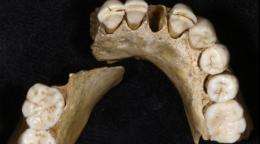European neanderthals were on the verge of extinction even before the arrival of modern humans: study

New findings from an international team of researchers show that most neanderthals in Europe died off around 50,000 years ago.
The previously held view of a Europe populated by a stable neanderthal population for hundreds of thousands of years up until modern humans arrived must therefore be revised. This new perspective on the neanderthals comes from a study of ancient DNA published today in Molecular Biology and Evolution. T
he results indicate that most neanderthals in Europe died off as early as 50,000 years ago. After that, a small group of neanderthals recolonised central and western Europe, where they survived for another 10,000 years before modern humans entered the picture.
The study is the result of an international project led by Swedish and Spanish researchers in Uppsala, Stockholm and Madrid.
“The fact that neanderthals in Europe were nearly extinct, but then recovered, and that all this took place long before they came into contact with modern humans came as a complete surprise to us. This indicates that the neanderthals may have been more sensitive to the dramatic climate changes that took place in the last Ice Age than was previously thought”, says Love Dalén, associate professor at the Swedish Museum of Natural History in Stockholm.
In connection with work on DNA from neanderthal fossils in northern Spain, the researchers noted that the genetic variation among European neanderthals was extremely limited during the last ten thousand years before the neanderthals disappeared. Older European neanderthal fossils, as well as fossils from Asia, had much greater genetic variation, on par with the amount of variation that might be expected from a species that had been abundant in an area for a long period of time.
“The amount of genetic variation in geologically older neanderthals as well as in Asian neanderthals was just as great as in modern humans as a species, whereas the variation among later European neanderthals was not even as high as that of modern humans in Iceland”, says Anders Götherström, associate professor at Uppsala University.
The results presented in the study are based entirely on severely degraded DNA, and the analyses have therefore required both advanced laboratory and computational methods. The research team has involved experts from a number of countries, including statisticians, experts on modern DNA sequencing and paleoanthropologists from Denmark, Spain and the US. Only when all members of the international research team had reviewed the findings could they feel certain that the available genetic data actually reveals an important and previously unknown part of neanderthal history.
“This type of interdisciplinary study is extremely valuable in advancing research about our evolutionary history. DNA from prehistoric people has led to a number of unexpected findings in recent years, and it will be really exciting to see what further discoveries are made in the coming years”, says Juan Luis Arsuaga, professor of human paleontology at the Universidad Complutense of Madrid.
More information: Partial genetic turnover in neandertals: continuity in the east and population replacement in the west, February 23, 2012. Mol Biol Evol doi: 10.1093/molbev/mss074
Provided by Uppsala University



















